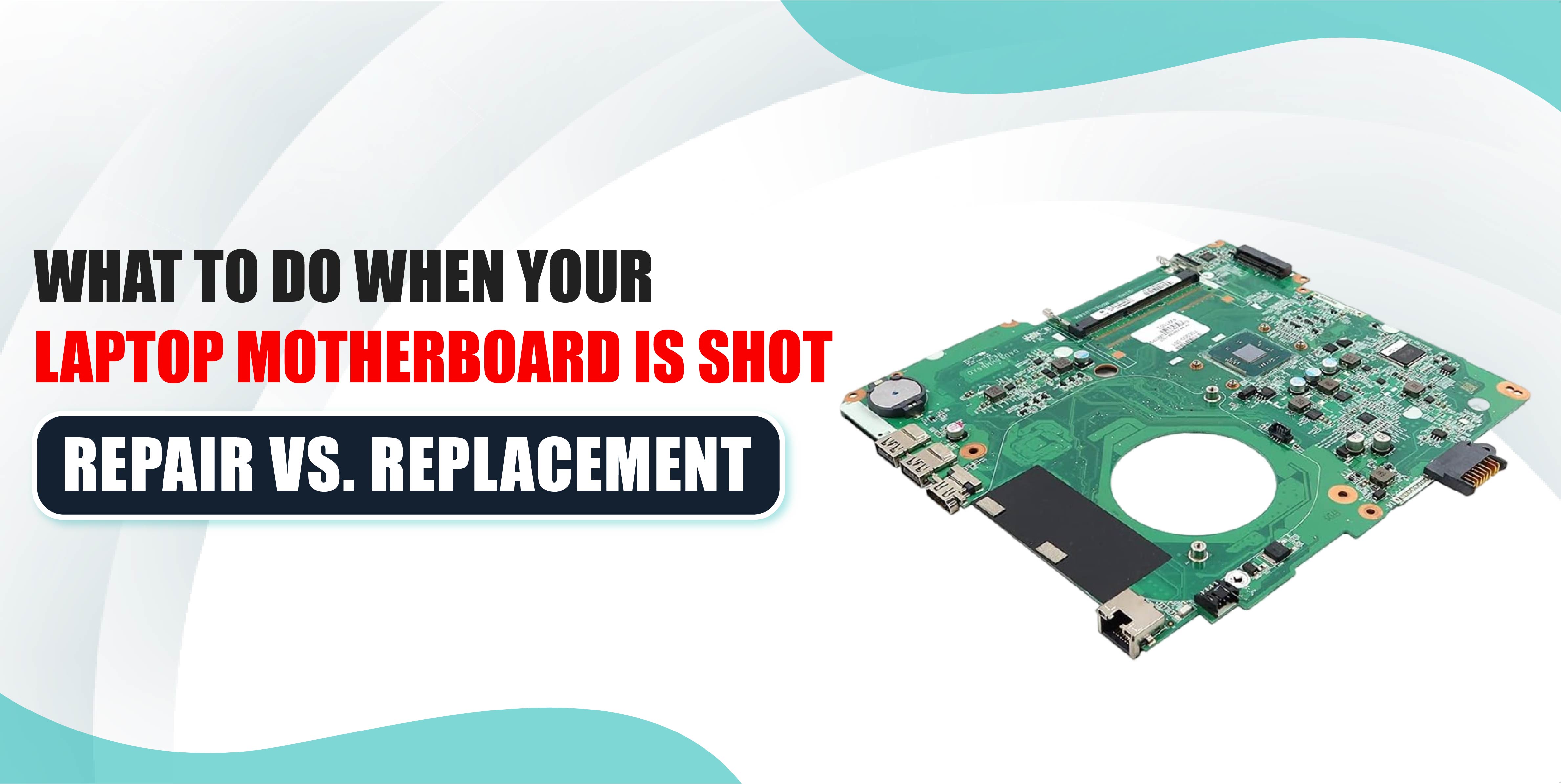
A laptop’s motherboard is one of its most critical components. It houses the CPU, RAM, and many other vital parts that allow your device to function. When your motherboard is "shot," meaning it’s damaged or no longer working, your entire laptop can become unusable.
Faced with this issue, you might wonder whether to repair the motherboard or replace the laptop altogether. In this article, we’ll explore the signs of a shot motherboard, what causes it, and how to decide between repair and replacement.
When your laptop’s motherboard is damaged, it can manifest in various ways. Here are some common signs:
Laptop won’t power on – If your laptop refuses to turn on despite a charged battery or being plugged in, it could be a motherboard issue.
Frequent freezing or crashing – Random shutdowns or blue screens of death (BSOD) can indicate that the motherboard is failing.
Overheating – While many factors cause laptops to overheat, a malfunctioning motherboard can lead to persistent overheating problems.
Peripheral malfunction – If your laptop no longer recognizes USB devices, external monitors, or other peripherals, the motherboard might be at fault.
Error codes or beeps – Some laptops emit specific error codes or beeping sounds when there’s a motherboard issue.
If your laptop exhibits one or more of these symptoms, there’s a strong chance the motherboard is damaged.
Several factors can lead to a shot motherboard:
Power surges – Sudden spikes in electricity can damage sensitive motherboard components.
Overheating – Excessive heat over time can warp or destroy parts of the motherboard.
Spills or moisture exposure – Liquids that seep into your laptop can short-circuit the motherboard.
Physical damage – Dropping your laptop or exposing it to blunt force can crack or break the motherboard.
Aging components – Like any electronic part, motherboards can degrade over time, especially in older laptops.
Once you’ve determined that your motherboard is shot, the big question arises: should you repair the motherboard or replace the laptop altogether? To make the right decision, several factors should be considered.
Repairing a shot motherboard can be a costly affair. The price of repairing a motherboard varies depending on your laptop's model, but it typically ranges from $150 to $500. For high-end gaming or professional laptops, the cost could be even higher due to the complexity and price of the parts involved.
However, if your laptop is relatively new, a motherboard repair may still be worth the cost. The repair could extend the life of your device for several years, making it a worthwhile investment.
2. Age of the Laptop
The age of your laptop plays a significant role in the repair vs. replacement decision. If your laptop is over five years old, it might be more cost-effective to replace it rather than repair the motherboard. Older laptops often have outdated components, and investing in a repair may not provide the performance you need for modern applications.
On the other hand, if your laptop is just a year or two old, repairing the motherboard could extend its lifespan, saving you from having to buy a new machine.
Sometimes, a shot motherboard can cause damage to other components, such as the hard drive, CPU, or RAM. In these cases, repairing the motherboard alone might not solve all the problems. If multiple parts are damaged, the repair costs could skyrocket, making replacement a more practical option.
Consult a professional technician to assess the extent of the damage before making a decision.
Consider what you use your laptop for. If you rely on it for demanding tasks such as video editing, gaming, or software development, replacing an old or damaged motherboard with new parts might not restore the desired level of performance. In such cases, investing in a new laptop with modern components may be a better option.
For everyday tasks like browsing the internet, sending emails, or using basic office software, repairing the motherboard may suffice, especially if you’re satisfied with your laptop’s current performance.
Your laptop is relatively new and still under warranty.
The cost of repair is significantly lower than the cost of a new laptop.
You’re satisfied with your laptop’s performance and don’t need an upgrade.
Only the motherboard is damaged, and other components are in good condition.
Your laptop is older, and the motherboard repair costs are high.
The damage extends beyond the motherboard, affecting multiple components.
You require a performance upgrade that an older laptop cannot provide, even with repairs.
Repair costs are close to or higher than the price of a new laptop.
Dealing with a shot motherboard can be stressful, but understanding your options can help you make an informed decision. Repairing a motherboard may be a viable option for newer laptops or those with minimal damage, while replacement might be more practical for older machines or when repair costs are too high. Always consult with a professional technician before making your final choice to ensure you get the best value for your money and performance needs.